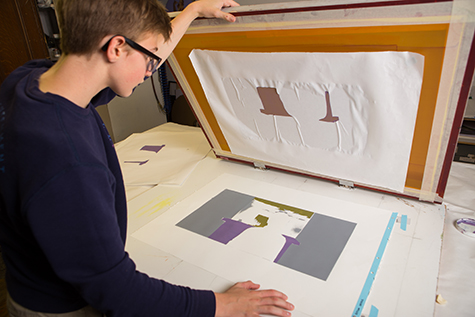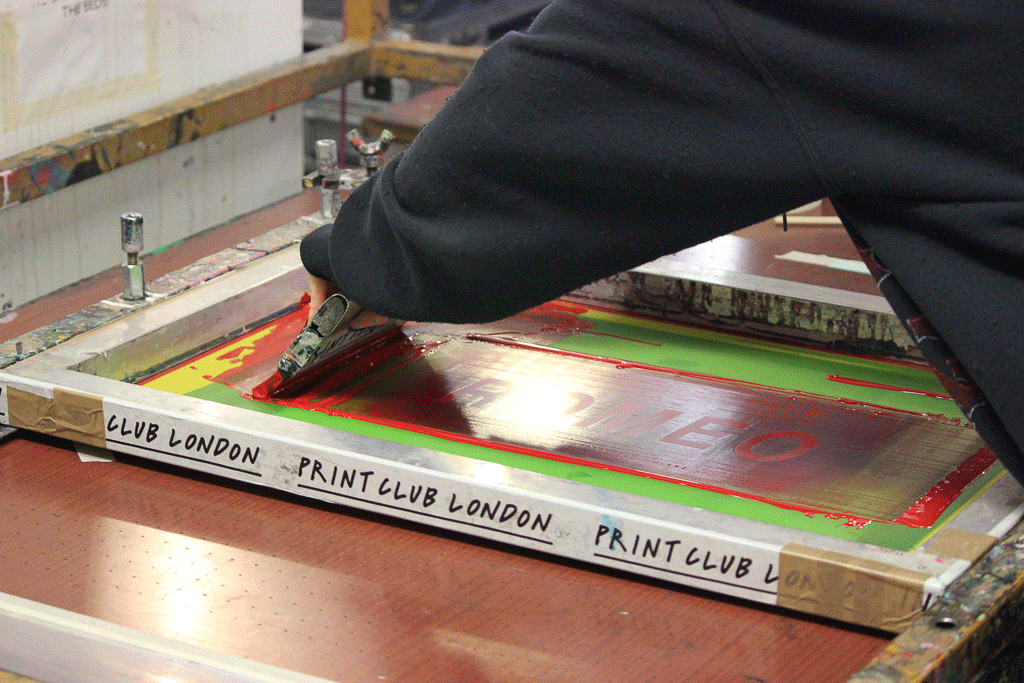The Vital Guide to Recognizing Screen Printing and Its Versatile Makes use of
Screen printing has a rich background that dates back to old times, developing right into a sophisticated strategy made use of across different sectors today. This overview explores the ins and outs of the screen printing process, describing its applications in fashion, advertising and marketing, and home decoration - 10:9 Design near me. Comprehending these principles can open imaginative potential for both imaginative and commercial tasks. The adhering to sections will disclose important ideas and methods to improve one's screen printing endeavors
The History of Screen Printing
Screen printing has roots that trace back centuries, its evolution shows the creative and technological advancements of different cultures. Coming from in old China, the method was originally utilized for embellishing textiles and later infect Japan, where it came to be indispensable to Ukiyo-e woodblock printing. The technique moved to Europe in the 18th century, where it got appeal among artisans and commercial printers. The innovation of image solution in the 20th century revolutionized screen printing, permitting even more intricate styles and better effectiveness. Artists like Andy Warhol better pushed its popularity, making use of the medium to produce renowned works that mixed commercialism and art. By the late 20th century, screen printing had actually established itself as a functional technique, employed in style, advertising and marketing, and great art. Today, it remains to advance, integrating electronic innovation and expanding its applications across numerous markets.
The Screen Printing Process Explained
Screen printing changes creative visions right into substantial layouts through a collection of accurate actions. At first, an image is created and after that transferred onto a screen, commonly made of great mesh textile extended over a structure. A light-sensitive emulsion is applied to the screen, which is revealed to light, setting in locations not covered by the image. After rinsing the unhardened solution, a stencil is developed.
Next, the screen is positioned over the substrate, whether it be fabric, paper, or another material. Ink is then pressed through the open locations of the pattern making use of a squeegee, transferring the layout onto the substrate below. This process can be repeated for multiple colors, requiring separate screens for every tone. The published thing is treated utilizing warm to ensure the ink sticks effectively, resulting in a long lasting, lively layout prepared for use.
Kinds Of Screen Printing Techniques

Additionally, specialty methods, such as discharge screen printing, get rid of color from the fabric to produce softer prints, while aluminum foil screen printing uses metal aluminum foil to attain a glossy finish (10:9 Design Abilene). digital print signs Each method uses distinctive characteristics, catering to numerous imaginative needs and production ranges, inevitably broadening the opportunities within the screen printing domain
Applications of Screen Printing in Various Industries

Furthermore, the signs and advertising sectors use screen printing for creating attractive display screens and banners. This method enables vibrant colors and elaborate layouts that record interest. In electronic devices, screen printing is used for using conductive inks to circuit boards, vital for part connections. The home decoration industry welcomes screen printing to create distinct layouts on fabrics and wall art. Overall, screen printing functions as an important tool throughout diverse fields, enhancing items with customized and aesthetically enticing graphics.
Tips for Effective Screen Printing Projects
While undertaking a screen printing job, cautious focus to information can significantly boost the last outcome. First, selecting top quality products is essential; this consists of the screen, inks, and substratums. Making use of suitable mesh matters can affect ink deposition and detail resolution. Prep work is just as important; detailed cleaning of screens and correct direct exposure times ensure crisp prints.
Next, exact registration is critical for multi-color prints. Utilizing placement devices can help accomplish exact layering. Additionally, testing prints on scrap materials prior to production assists recognize prospective problems without throwing away resources.

Frequently Asked Questions
What Materials Are Ideal for Screen Printing on Fabric?
Cotton and polyester blends are suitable for screen printing on textile because of their durability and ink absorption. Furthermore, specialized materials like silk or canvas can produce unique appearances and finishes, boosting the overall style top quality.
How Do I Clean and Maintain Screen Printing Tools?
To preserve and cleanse screen printing tools, one ought to routinely clean screens with ideal solvents, inspect squeegees for wear, lubricate moving parts, and store all products in a completely dry, dust-free environment to lengthen their life-span.
What Are the Ecological Impacts of Screen Printing?
Screen printing can have significant environmental impacts, including chemical waste from inks and solvents, water use throughout cleansing procedures, and power intake. Environment-friendly products and lasting techniques are essential for minimizing these negative effects.
Can Screen Printing Be Done at Home Effectively?
Screen printing can be efficiently done at home with the right materials and techniques. Hobbyists can develop top quality prints, though success depends upon their skill level, devices, and understanding of the process included.
What Are the Prices Related To Beginning a Screen Printing Company?

Beginning a screen printing business entails prices for devices, products, and work space. Preliminary expenses usually range from a few hundred to a number of thousand dollars, relying on the scale, top quality of machinery, and wanted production ability.
Screen printing has a rich background that dates back to ancient times, advancing into an advanced method made use of throughout numerous industries today. An additional technique, rotary screen printing, uses cylindrical screens, helping with continual printing on fabric rolls, therefore enhancing effectiveness for large productions. Furthermore, specialized techniques, such as discharge screen printing, eliminate color from the material to develop softer prints, while foil screen printing applies metallic foil to accomplish a shiny surface. In the fashion market, screen printing is extensively utilized to create vivid styles on garments, allowing brand names to display their distinct styles. Cotton and polyester blends are perfect for screen printing on material due to their sturdiness and ink absorption.